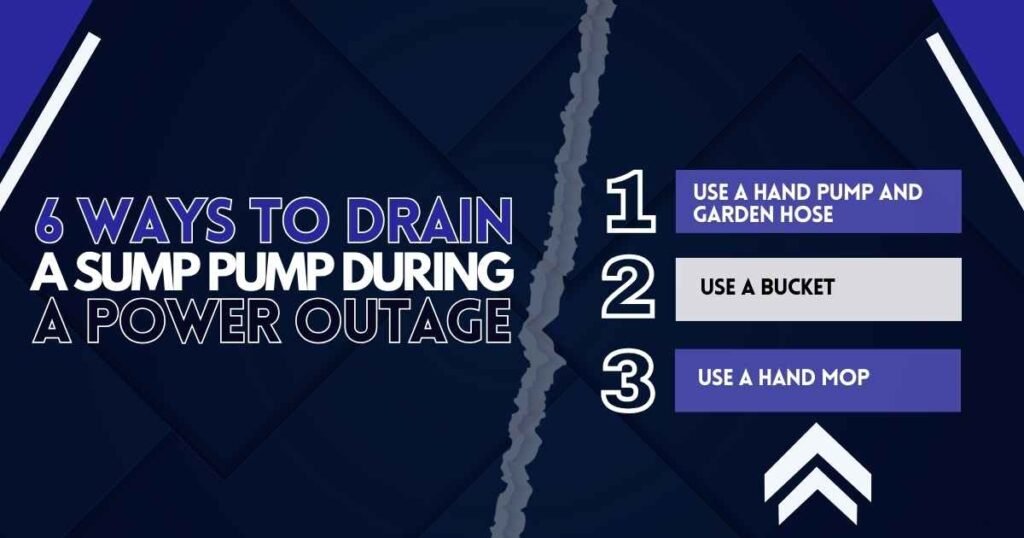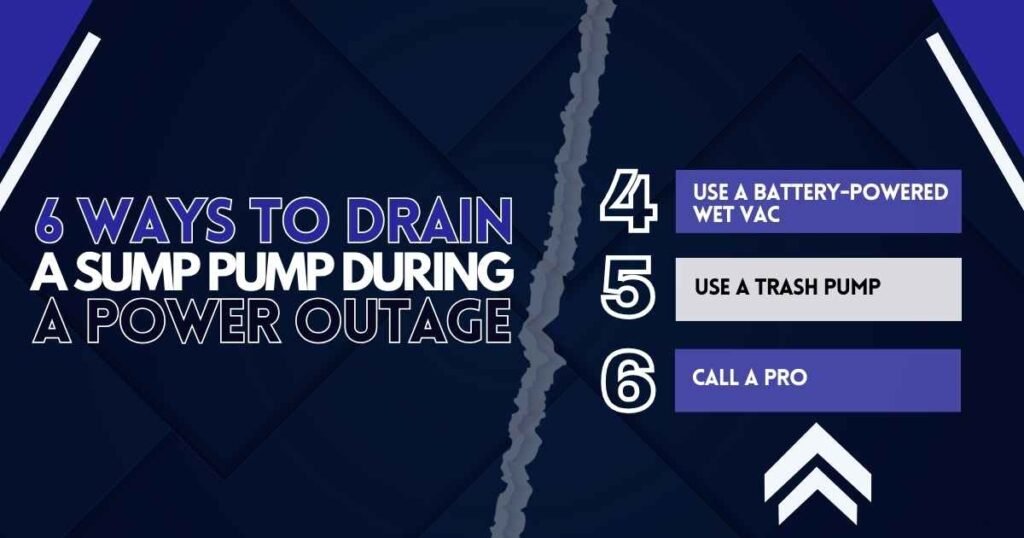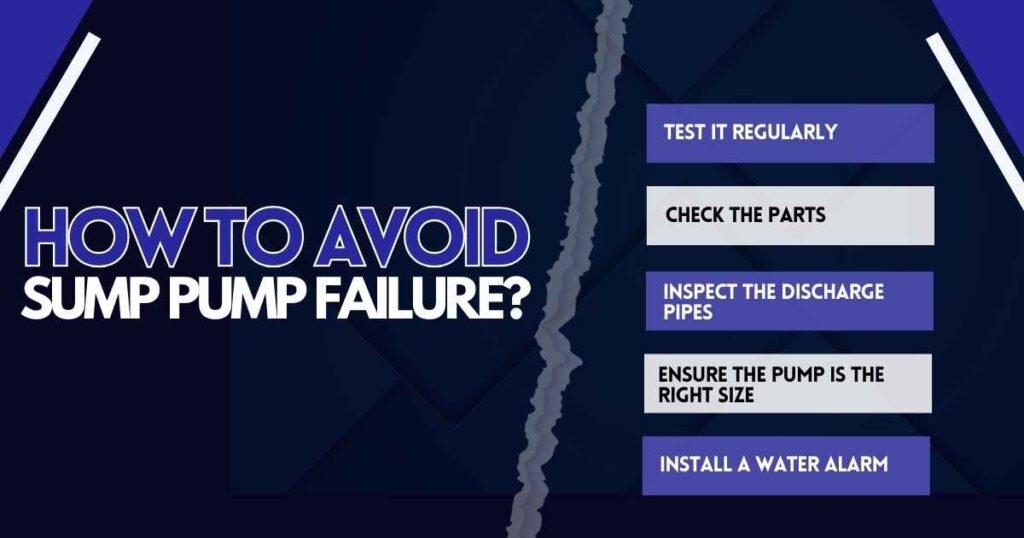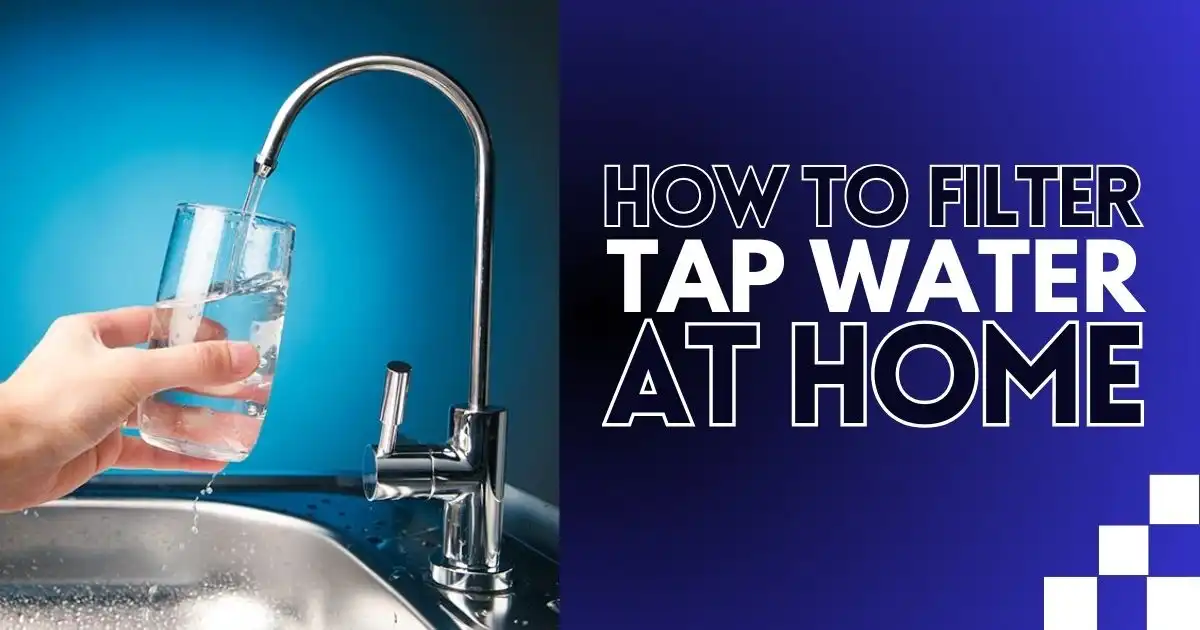A heavy storm hits, and the power goes out. You hear the rain pounding on the roof and realize your sump pump has stopped working. The water in the basement is rising fast, and you feel helpless.
It’s a stressful situation that no homeowner wants to face, yet it happens more often than you might think. When the power fails, knowing how to drain a sump pump without electricity can make all the difference in keeping your home safe from flooding. Taking quick, simple steps can save you from a much bigger disaster.
What is a Sump Pump?
A sump pump is a device that helps remove water from your basement and directs it outside your home. It sits in a specially made pit, called a basin, which is located below the floor of your basement. The pump has valves that detect rising water levels or pressure.
When the water gets too high, the sump pump automatically turns on and pushes the water out through a discharge pipe. This pipe, known as an effluent line, carries the water to a safe drainage area away from your home.
What Is the Cost of Installing a Sump Pump?
The cost of installing a sump pump depends on the type and location. A pedestal sump pump costs between $60 and $170, while a submersible pump, which requires more complex installation, ranges from $100 to $400.
Labor costs for installation are typically between $45 and $200 per hour, on top of the pump price. If you’ve ever experienced a basement flood, you know installing a sump pump is a smart investment for your peace of mind.
6 Ways to Drain a Sump Pump During a Power Outage
When the power is out, you’ll need to step in and handle the water manually. Here are some simple ways to manage it:

1. Use a Hand Pump and Garden Hose
A hand pump paired with a garden hose is a reliable way to remove water when the power is out. First, connect the garden hose to the hand pump, ensuring the other end of the hose directs water to a safe spot, like a storm drain, your lawn, or a garden area where the water won’t flow back toward your home.
Insert the pump into the sump pump basin and manually pump to remove the water. This method is effective for quickly moving large amounts of water, but it requires physical effort. If the water level is high, pace yourself and take breaks to avoid exhaustion.
2. Use a Bucket
If you spot the water early and it hasn’t risen too high, a bucket or even a large cup can work to scoop it out. Start by removing as much water as you can from the sump pump basin, then carry the bucket outside to empty it far from your home’s foundation.
This prevents the water from returning to the basement. While this is one of the simplest solutions, it can become tiring and time-consuming if the water level keeps rising, so it’s best for smaller amounts or when no other tools are available.
3. Use a Hand Mop
For smaller amounts of water, a hand mop with strong absorption can be a helpful tool. Start by mopping up the water and wringing it out into a bucket. Once the bucket is full, carry it outside and pour the water away from your house, preferably in a safe drainage area.
This method works best for minor water buildup, such as small puddles. If there’s more water than a mop can handle, use a bucket to remove most of it first. Then, mop up any remaining water to ensure the area is as dry as possible. While this method takes effort, it’s effective for keeping small water issues under control.

4. Use a Battery-Powered Wet Vac
If you have access to a battery-powered wet/dry vacuum, it’s an excellent option during a power outage. These cordless vacuums are designed to handle water and are much faster and easier to use than manual tools like buckets or mops.
To prepare, make sure your wet vac is fully charged, especially during rainy seasons when flooding risks are higher. When your sump pump fails, simply switch on the wet vac, suck up the water, and empty the tank outside. This tool is especially handy for dealing with larger amounts of water quickly and efficiently, making it a valuable backup in emergencies.
5. Use a Trash Pump
For homes in flood-prone areas, a gas-powered trash pump is a valuable tool to have. These pumps are highly effective, capable of removing thousands of gallons of water per hour, making them ideal for large-scale flooding. They are also versatile, handling not just clean rainwater but also dirty water mixed with debris, mud, or other contaminants.
If you live in an area prone to heavy storms or flooding, it’s a smart idea to keep a trash pump ready. Regularly check and maintain the pump so it’s functional when you need it most. Additionally, ensure you have a safe place to redirect the water, such as a drainage area far from your home’s foundation.
6. Call a Pro
When flooding is due to plumbing issues, like a broken pipe or a faulty sump pump, calling a professional plumber is essential. A plumber can quickly identify the root cause, make necessary repairs, and offer solutions to prevent future problems. If the flooding is weather-related, assistance might take longer, especially during widespread storms.
However, a professional can recommend and install long-term solutions, such as a backup sump pump or a water-powered pump, to protect your home in the future. They can check your plumbing for weak spots to reduce risks during storms or outages. Expert help keeps your home safe and ready for water issues.
How to Avoid Sump Pump Failure?

While you can’t stop bad weather or prevent power outages, you can take these simple steps to keep your sump pump ready and working when you need it most.
- Test It Regularly: Pour a bucket of water into the sump pump basin to check if it starts working and drains the water properly. Watch to ensure it activates, pumps out the water, and shuts off correctly. Do this test at least twice a year. If you live in a flood-prone area, test it once every season. If the pump doesn’t work, call a professional immediately to repair or replace it before the next rainstorm.
- Check the Parts: Open the pump and inspect its components. Look for damaged or worn-out blades, as these can stop the pump from working efficiently. Also, check for any loose or disconnected parts. If you see issues, contact a sump pump specialist to repair or replace the damaged parts. Regular maintenance can prevent bigger problems later.
- Inspect the Discharge Pipes: Examine the pipes that carry water away from your home. Cracked, clogged, or disconnected pipes can prevent water from draining properly, leading to backups and flooding. Make sure the pipes are clear of debris and securely connected. Test their flow by running water through the pump during your regular checkups.
- Ensure the Pump Is the Right Size: Sump pumps come in different sizes, measured by horsepower and how much water they can pump per minute or hour. If the pump is too small, it might not handle heavy rain or flooding. If it’s too big, it might cycle on and off too often, causing wear and tear. A professional plumber can help you choose the right size pump for your home based on its needs.
- Install a Water Alarm: A battery-powered water alarm detects rising water levels in the sump pump basin and alerts you if the pump isn’t working. This gives you time to act before the water overflows and floods your basement. Alarms are affordable and easy to install, providing extra peace of mind during storms or power outages.
Preparedness Brings Peace
Just like a sump pump needs a backup plan to handle rising water, life works best when we’re prepared for the unexpected. Waiting until trouble strikes can leave us overwhelmed, but taking small, thoughtful steps ahead of time can save us from bigger problems. If it’s a power outage or a life challenge, being ready helps us stay calm and in control. True peace comes from knowing you’ve done what you can to protect what matters most.
Don’t wait for a flood to catch you off guard! Vegas Plumbing Pros offers expert sump pump services, including installations, repairs, and backup systems to keep your home safe during power outages or heavy rains. Our team ensures your sump pump works efficiently to protect what matters most.
FAQs
Where Should a Sump Pump Drain?
A sump pump should drain into a storm drain or onto your lawn, not the sewer or septic tank, to avoid legal or overflow issues. If manually empty sump pump, direct the water to a safe area like a storm drain or yard.
What are alternative power sources for a sump pump?
If you don’t have a gas-powered generator, a sump pump with a battery backup is a great option. During a power outage, the pump automatically switches to battery power, allowing it to keep working. For those living in or near a city, a water-powered sump pump is another option. It uses the city’s water pressure to operate when the electricity is out.
Does a Sump Pump Affect a Home’s Value?
Installing a sump pump typically adds value to a home rather than reducing it. Any improvement that protects a home and extends its longevity is seen as a smart investment. If you’re house hunting and notice a sump pump in the basement, there’s no need to worry. Check the flood zone map to understand the property’s risk of flooding.
How to get water out of basement without a sump pump?
You can remove water from a basement without a sump pump using simple tools. A wet/dry vacuum works well for sucking up water, while a bucket and mop can handle smaller amounts. For larger volumes, try a portable pump or a siphon with a garden hose, and once the water is gone, use fans and a dehumidifier to dry the area and prevent mold.



